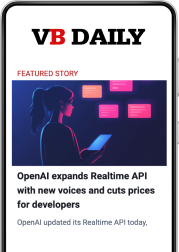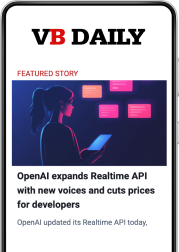Google adds limited chat personalization to Gemini, trails Anthropic and OpenAI in memory features
Want smarter insights in your inbox? Sign up for our weekly newsletters to get only what matters to enterprise AI, data, and security leaders. Subscribe Now Google is playing catch-up against Anthropic and OpenAI as it slowly adds customization, personalization and gives users more control over what data to reference to its Gemini app. Personalization and data control in chat platforms make it easier for both individual and enterprise users to converse with the chatbot and retain preferences. This is even more important for ongoing projects in the enterprise space, as chatbots need to remember details such as company branding or voice. Google opted for a slower rollout of these features and will not allow users to edit or delete preferences, unlike its competitors. First rolling out to Gemini 2.5 Pro in select countries, Google will make “Personal Context” a default setting, allowing it to “learn from your past conversations and provide relevant and tailored responses.” The company plans to expand the feature to 2.5 Flash in the next few weeks. AI Scaling Hits Its Limits Power caps, rising token costs, and inference delays are reshaping enterprise AI. Join our exclusive salon to discover how top teams are: Secure your spot to stay ahead: https://bit.ly/4mwGngO Previous versions of the app put the burden on customers to point the model to a specific chat to source preferences, for example, by mentioning an earlier conversation. Users can still disable Personal Context at any time. Michael Siliski, senior director of Product Management for the Gemini app, said the rollout is part of plans to make the app more personalized. “At I/O, we introduced our vision for the Gemini app: to create an AI assistant that learns and truly understands you—not one just responds to your prompt in the same way that it would anyone else’s prompt,” Siliski said in a blog post. Currently, Gemini apps save chats for up to 72 hours if the save activity option is toggled off and can auto-delete other activity in intervals of three, 18 or 36 months. Temporary chat and data control Other new features coming to the Gemini app are Temporary Chat and additional customer data control. Temporary Chat, a feature also introduced on ChatGPT in April last year, enables users to have one-off conversations. These chats will not influence future ones and won’t be used for personalization or to train AI models. Google announced the introduction of additional data controls. The feature, which is off by default, would allow users to prevent their data from being used in future Google model training. “When this setting is on, a sample of your future uploads will be used to help improve Google services for everyone. If you prefer not to have your data used this way, you can turn this setting off or use Temporary Chats. If your Gemini Apps Activity setting is currently off, your Keep Activity setting will remain off, and you can turn it on anytime,” Silisky said. Google said this is an expansion of an earlier update that allowed users to choose which audio, video and screens they can share with Gemini. Memory and chatbots Google’s Gemini updates come a full year after its biggest competitors introduced similar features. ChatGPT, for example, introduced temporary chat, chat history and memory in 2024. OpenAI updated these capabilities in April of this year, and now ChatGPT can reference all past conversations. Anthropic introduced Styles in November 2024, which allows Claude users to customize how the model interacts with them. Earlier this week, Anthropic pushed an update for Claude to reference all conversations, not just ones specified by users. While Google introduced personalization to Gemini 2.0, the model was only able to reference previous conversations if prompted by the user. Memory, personalization and customization continue to be a battleground in the AI arms race as users want chat platforms to “just know” them or their brand. It provides context and eliminates the need to repeat instructions for ongoing projects. source













